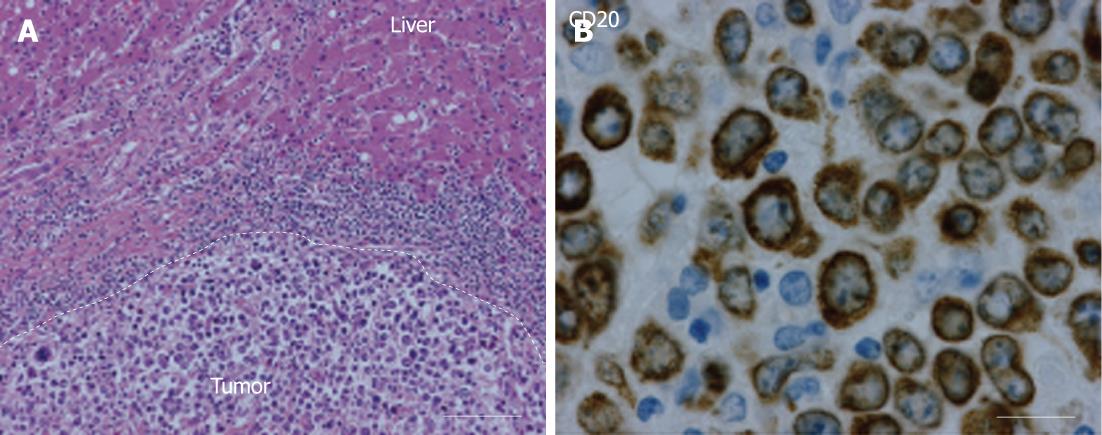Copyright
©2012 Baishideng Publishing Group Co.
Figure 1 Radiological depiction of the liver lesion.
Arterial (A), portal (B) and equilibrium phase (C) computed tomography scan with a large (10 cm × 8 cm × 7.5 cm) hypovascular lesion in segments V and VI of the liver with some inhomogeneity and without calcifications (lesion indicated by 3 white arrows).
Figure 2 Magnetic resonance imaging showing a large, sharply demarcated lesion measuring 11 cm in the right liver lobe.
The lesion is hypointense on T1 (A) and hyperintense on T2 (B) weighed images with slight inhomogeneity. Arterial (C), portal (D), equilibrium (E) and hepato-biliary (20 min) (F) phase magnetic resonance imaging after Gd-EOB-DTPA contrast enhancement reveal a hypovasular lesion without uptake in the hepato-biliary phase (lesion indicated by white arrows).
Figure 3 Intraoperative aspect of lesion.
A: Tumor presentation intra-operatively; B: Tumor in segment V/VI of the liver with en bloc in the resection specimen the gall bladder (black arrow indicates gall bladder); C: Resection plane of the liver; D: Resection specimen with centrally white/yellow shiny tumor (small white arrow indicates resection plane, long white arrow indicates tumor).
Figure 4 Histopathological results.
A: Hematoxylin eosin staining (150 ×) shows a large cell malignancy with mostly loose tumor cells with nuclear polymorphism. Furthermore, frequent giant nuclear bodies with macro-nucleoli and numerous cell mitoses. No central necrosis is observed; B: A photomicrograph (400 ×) showing lymphocytic tumor cells which are positive for CD20 staining around the plasma membrane, indicating non-Hodgkin lymphoma of B-cell origin.
- Citation: Steller EJ, Leeuwen MSV, Hillegersberg RV, Schipper ME, Rinkes IHB, Molenaar IQ. Primary lymphoma of the liver - A complex diagnosis. World J Radiol 2012; 4(2): 53-57
- URL: https://www.wjgnet.com/1949-8470/full/v4/i2/53.htm
- DOI: https://dx.doi.org/10.4329/wjr.v4.i2.53












